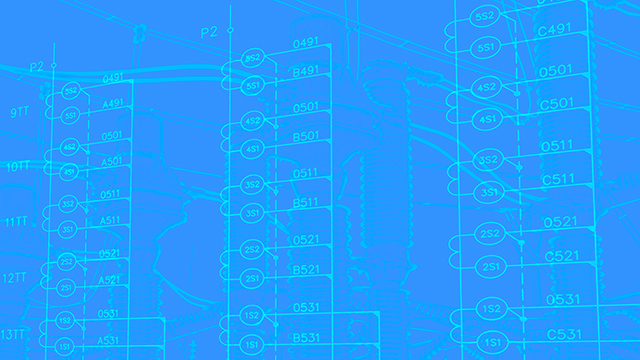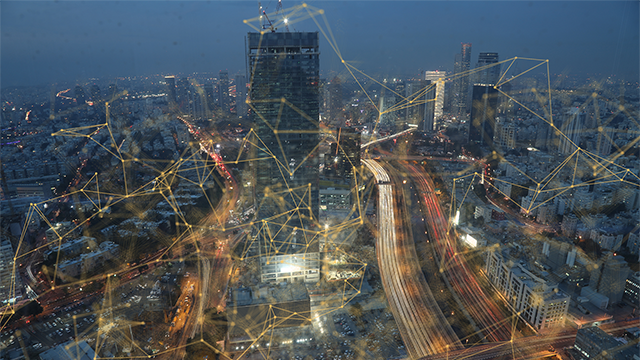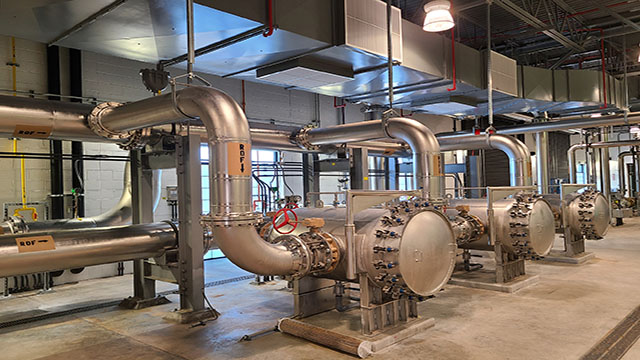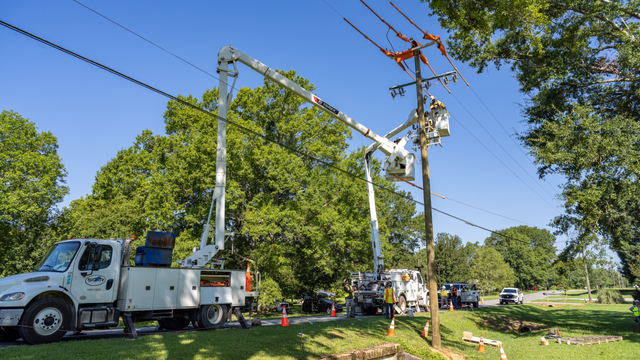Engineering the Future: How AI is Revolutionizing Infrastructure and Sustainability
Simple artificial intelligence (AI) has been around for the last decade and is present in technologies we use in our everyday lives. Whether it is a virtual assistant such as Siri or Alexa, online fraud detection or e-commerce recommendations, traditional AI and its more recent subsets — generative AI (GenAI), machine learning and deep learning — are now becoming more ubiquitous. A day doesn’t go by that we don’t see headlines about OpenAI and ChatGPT, and the other major technology leaders racing for leadership positions in this space. In a 2023 study by Harvard University and Boston Consulting Group (BCG), BCG consultants using AI completed 12.2% more tasks while doing them more than 25% faster. They also produced more than 40% higher quality results compared to those not using GenAI(Link). The use of GenAI to help us solve complex problems at scale more efficiently and battle talent shortages will only also rapidly be expanding into the engineering and construction space as well. As AI expands into sustainable infrastructure, Black & Veatch is pursuing the technology with vigor and an eye on its multitude of benefits for clients. As Engineering News Record notes, “AI could be the X factor that helps projects stay profitable” and it is noted as a major complement to design services.
Ryan Pletka, Black & Veatch’s vice president of innovation, believes that GenAI will have a dramatically positive impact on critical human infrastructure going forward, especially as sustainability becomes more embedded in our culture.
“GenAI is absolutely critical for us as a society to meet our resiliency, sustainability, reliability and safety goals,” Pletka said. “With the constraints that we face as a world, we can’t solve them without this essential toolkit.” For example, Black & Veatch is already using GenAI for everything from summarizing thousands of pages of complex environmental regulations to helping evaluate entirely new sustainable energy solutions. In short, GenAI can be used to accelerate the analysis and engineering needed to solve the world’s most pressing challenges.
“Generative and applied AI will become an even larger part of engineering and operating critical infrastructure. At Black & Veatch, we plan on using generative and applied AI to advance engineering practices and establish preventative maintenance patterns that we expect to reinforce our position as THE Leader in Sustainable Infrastructure,” said Mike Adams, chief digital technology officer for Black & Veatch. “We are confident that aggressively scaling our Data, Analytics, and AI competency will supercharge Black & Veatch outcomes, optimize use of critical and scarce Engineering top talent, and give us a competitive edge that will ultimately benefit our customers.”
“For many projects, you can’t get there in time with a conventional engineering solution, or it’s just not feasible,” said Christopher Ranck, collections systems and wet weather planning leader for Black & Veatch. “We’re going to run out of resources, either in funding, time, or person power to do things the way we used to. AI is going to be what allows us to keep up with the increasingly challenging goals of being a truly sustainable society.”
Susan Herman, Black & Veatch’s digital water lead, said that company’s top leadership has adopted five key principles of AI for sustainable infrastructure: Security, privacy protection, safety, cybersecurity and accountability. Those tenets include ethical responsibilities to ensure the safeguarding of Black & Veatch’s intellectual property and the protection of confidential client information. Another key principle involves embedding AI into the culture of the entire Black & Veatch global organization. This means AI is not something known only to engineers, but rather it is available to all, and the company actively is seeking to seamlessly integrate the technology across all operations.
Taking the Mystery Out of GenAI, Machine Learning
The hype around GenAI often translates to fear and mystery in prominent news spaces, but part of Black & Veatch’s goal is to be transparent about its usage. Through such openness, the company can then help clients understand how “Responsible AI” works, thereby alleviating any worries and embracing its positive characteristics. To Ranck, machine learning can be described as a “fancy way of doing statistics.”
“Everything we do in engineering has some sort of underpinning – physics, biology, chemistry – and in machine learning, we’re looking at relationships in data,” he said. “The more I use it, the more I see it is not as mysterious as you might think. You start to see why the algorithms react the way they do. You see how they pick up trends and see the relationships.”
It is machine learning’s ability to assemble massive amounts of complex relationships that makes it so applicable in building and maintaining infrastructure. To name just a few such uses in engineering, GenAI/machine learning is predicting outcomes that impact infrastructure, optimizing operations based on real-time data and helping operators make timely decisions that have direct impact on resources, scalability, costs, emissions and safety.
Putting GenAI, Machine Learning to Work for Clients
For more than two decades, Black & Veatch has offered its Monitoring and Diagnostics (M&D) solution to power plants across the United States and Canada. This service collects real-time sensor data from scores of power plants and industrial facilities then applies machine learning analytics to determine if the machinery and equipment are operating normally. With the use of AI, we are providing automated diagnostic support based on our extensive database of historical M&D issues and resolutions that increases our ability to serve our clients more effectively and efficient. In this manner, the M&D solution proactively mitigates or eliminates problems, effectively saving clients hundreds of millions of value through this enhanced capability.
The company recently announced that Capital Power, a Canada-based wholesale power producer, has selected Black & Veatch to remotely monitor seven of its facilities across the United States and Canada. Covington Water District in Washington State utilized Black & Veatch to develop a machine learning model for water main breaks to evaluate risk as the water system ages. Another client using Black & Veatch’s AI expertise is Citizens Energy Group, the Indianapolis natural gas, water, wastewater and thermal energy utility. Citizens turned to Black & Veatch for a machine learning solution to predict inflow to its combined sewer overflow (CSO) tunnel system, and Black & Veatch developed and implemented the process to obtain detailed weather forecast data and present forecasted inflow in a dashboard to inform operational decisions, with comparisons to actual data following each event.
“When we started collecting real data and seeing the inflow forecasts lining up with actual inflows, our confidence began to grow.” Ranck said.
Partnering with Other Companies
Black & Veatch believes that much of the progress in Generative AI (GenAI) will come from strategic partnerships, both with outside companies and with clients. The company has partnerships with entities ranging from small startups to major tech firms.
For instance, Black & Veatch is piloting the use of a leading AI suite with a major technology provider in their Monitoring & Diagnostics (M&D) centers. This initiative aims to build classification models that learn and classify the actions of engineers, improving the efficiency and accuracy of the diagnostic process.
Additionally, Black & Veatch is leveraging advanced applications for asset monitoring, health index, and predictive outcomes to provide condition-based maintenance capabilities. Black & Veatch's M&D experience and capabilities will be offered via a digital twin exchange platform that connects customers in asset-intensive industries with partner systems, enabling the sharing of proven asset models and future integration with advanced AI technologies.
Human Involvement Still the Key
For certain GenAI uses, the programs employ large language models (LLM) because the data sets are so massive and are beyond what humans can process. Another model is known as deep learning, which can recognize complex patterns in pictures, text, audio and other data to produce accurate insights.
Even with these highly complex advancements, there is some level of institutional knowledge or human intelligence required. Ranck said he regularly checks the machine learning output to ensure it is meeting the intended needs.
“We always want to see if our artificial intelligence is aligned with our human intelligence and our institutional knowledge,” he said. “Sometimes the results might be going in the opposite way than we expected, so we do some more iterations and bring in more data and make sure is the tool is representative.”
Embedding AI in Black & Veatch Culture
Black & Veatch is a 100-percent employee-owned company, with more than 12,000 professionals in more than 100 offices across the globe. For Black & Veatch, GenAI is not just another buzzword but rather a technology that should be used in a way that benefits the company and its clients.
The GenAI strategy adopted by the company envisions “enhancing the employee-owner experience” and a mission of “prioritizing Black & Veatch culture.” Very simply, the testing and use of GenAI at Black & Veatch is organic and can be embraced, understood and used by any professional at the company.
To demonstrate its desire to hear directly from Black & Veatch personnel – and to simultaneously spread some excitement about GenAI usage – the company launched a company-wide contest in 2023 to explore ways the company could employ generative AI. Banking on the widespread popularity of sporting tournament competitions, Pletka designed a bracketed contest in which submitted ideas went up against each other and were voted on until five finalists emerged. They’re
now going through a more formalized proof-of-concept process with outside GenAI tech companies.
One Standout Idea
One idea generated by the GenAI tournament advanced considerably and is in the piloting stage, with the potential it could be rolled out to all Black & Veatch engineers in 2024. Called “Enterprise Knowledge Chat,” its purpose is to simplify access to thousands of crucial knowledge documents by analyzing large amounts of information and providing accurate responses to queries by professionals in real time.
The initial iteration is only using quality management system (QMS) documents, which contain thousands of policies and procedures for engineering design – hence, the first target group is the company’s engineers. But the framework is being developed so it has the potential to encompass other documents throughout the entire organization, including construction, supply chain, project controls, operations, advisory and more. The technology is based on OpenAI’s ChatGPT 4.0, using retrieval augmented generation (RAG) to formulate responses to professionals, including links to the source reference documents.
“What we’re building is a tool that will give our professionals the answers and information they need, but also get them directed to the right source documents where the information resides,” said Mike Etheridge, the Black & Veatch process management lead who has been involved with the program’s development. “With our GenAI QMS solution, we have optimized the speed-to-knowledge for our professionals, enabling easier and quicker access to standards in our Central Quality Management System (QMS). With this capability, professionals can instantly receive responses to their questions based on our proprietary knowledge database, with direct links to source documents, eliminating the time-consuming process of manually searching through various sites or folders looking for relevant files. With this solution we can more effectively gain value from our accumulated corporate knowledge to enhance the quality and value of our services, drawing on the expertise of our 110-year-old company.”
Brian Melton, a Black & Veatch technology and innovation leader, emphasized that the solution architecture is based around privacy protection, keeping in mind the company’s principles of ethical GenAI usage.
“We’re feeding this internal documentation that’s got privacy and security wrapped around it, so our data never goes where we don’t want it to go,” he said. “This is only using the data that is fed from Black & Veatch, not open-source Internet data.” Ultimately, this will create new opportunities for how our global organization captures knowledge in a more accessible and impactful way, paving the way for continued innovation.
Pletka added that the tournament helped uncover the real issues that professionals are facing daily. “It is a unique way of engaging people across the company to find out what problems they are facing day-to-day at a grassroots level.”
A Black & Veatch Differentiator
When a significant portion of the company’s global employee-owners are using AI, it naturally becomes embedded in the organization’s solutions and proposals. It then loses its mystery and instead becomes a go-to tool where anyone can develop a certain level of expertise.
"AI is a transformative and powerful technology, but it comes with inherent risks," stated Josh Edwards, Global Director of Data Science & Operations at Black & Veatch. "At Black & Veatch, we understand these risk and have the right principles in place to mitigate those risks. We are well-equipped to guide our clients in adopting AI and GenAI responsibly, leveraging best practices. Our long history of testing, adapting, and innovating new methods to enhance engineering workloads positions us uniquely to support this transformative capability.”
As engineering moves towards newer technologies that increase efficiencies and create greater knowledge transfer, it allows for companies like Black & Veatch to serve their clients better. By automating and scaling our capacity to design, engineer and project manage critical infrastructure it allows our clients’ operations to run more efficiently, while engineers can further create new solutions to best serve the entire global infrastructure industry.
Whether it is design optimization and simulation, predictive maintenance of assets, or enhanced safety and productivity efficiencies, AI and GenAI have a place in engineering and are here to stay. If you’d like to learn more about integrating AI & GenAI for your facilities, infrastructure, construction, design and asset management practices, please contact Black & Veatch at bv.com/contact-us/.








